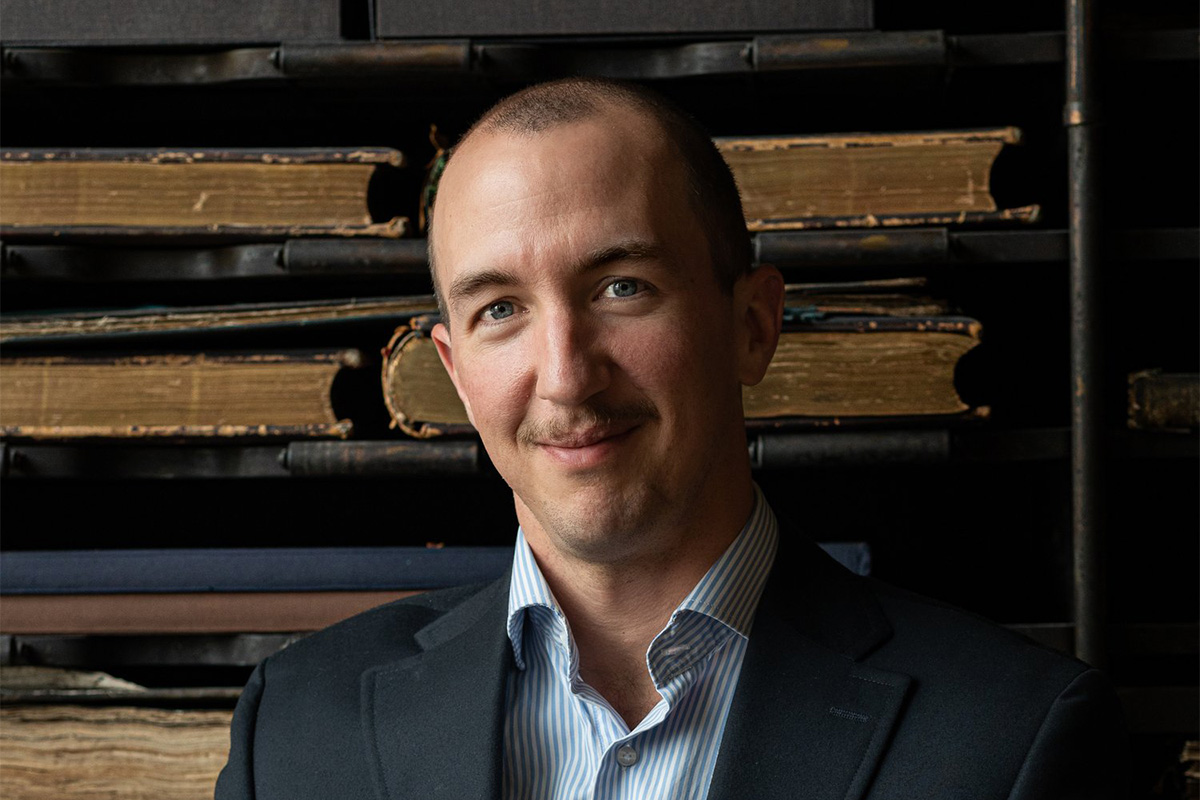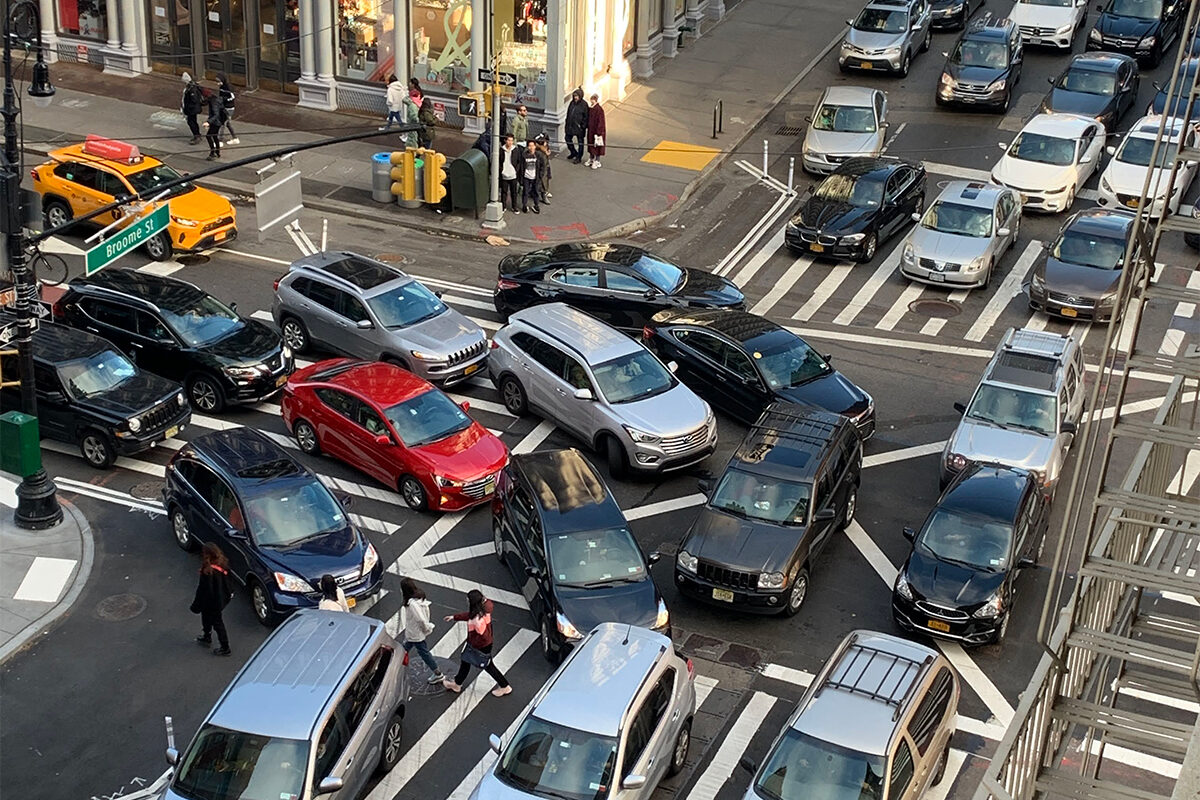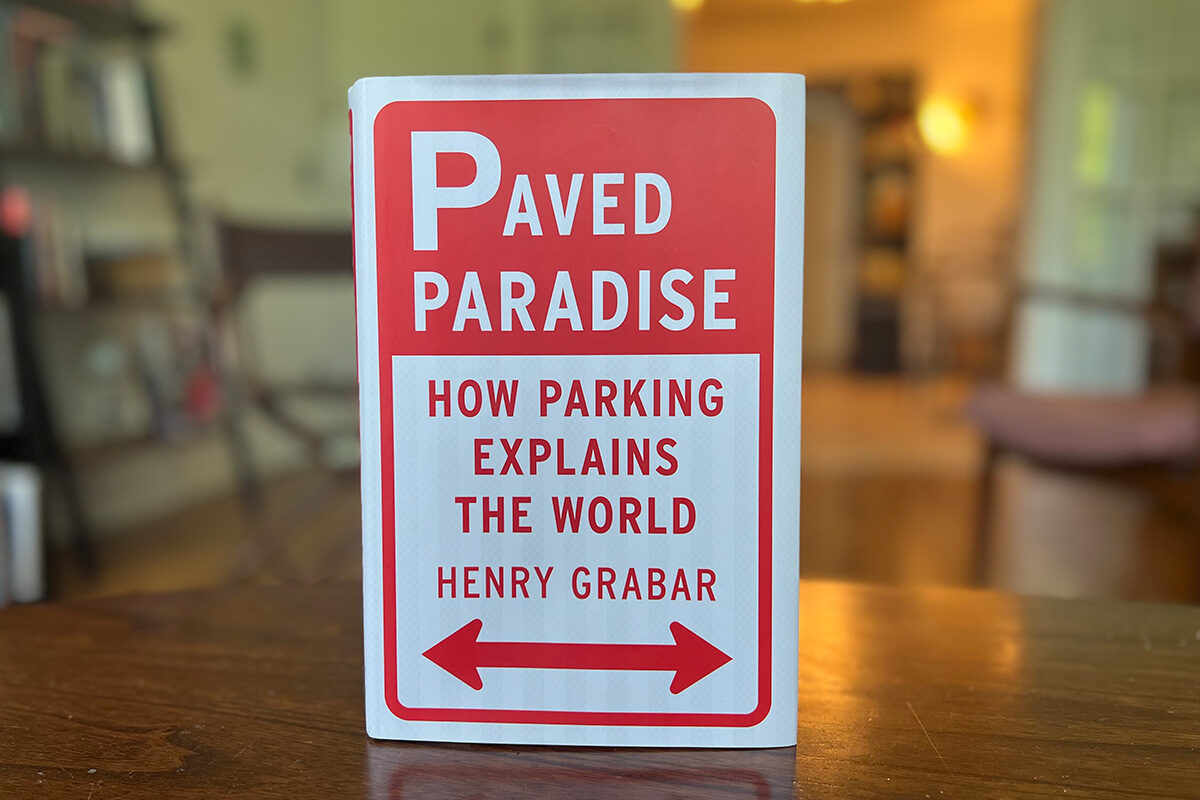
Henry Grabar writes about contemporary challenges facing cities and city-dwellers. Through journalistic storytelling, he spotlights urban conundrums with an on-the-ground, human angle that’s often lost in bureaucratic buzzwords. Currently a staff writer at Slate, his bylines have appeared in the Wall Street Journal, the Atlantic, the Guardian and others. He was a 2020 Richard Rogers Fellow at the Harvard Graduate School of Design, and in 2016, was in the inaugural class of the Urban Design Forum’s Forefront Fellowship. He is the author of the new book, Paved Paradise: How Parking Explains the World, out this month from Penguin Press. See his full bio below.
I talked to Henry about years of following petty parking fracases as he wrote his new book, growing up on a de-facto onramp to the Holland Tunnel, and takeaways from his recent time living in Paris.
GB: Where did you grow up? Did that inform your career path at all?
HG: I grew up in Lower Manhattan. I guess my origin story probably begins with the fact that I grew up on Broome Street, which connects the Williamsburg Bridge to the Holland Tunnel. Broome Street is one of the Holland Tunnel onramps. And every Friday night, it’s a horrendous traffic jam full of drivers blocking the box, and engaging in otherwise barbarian behavior. I think encountering that every afternoon gave me a certain perspective about car culture and the way people behave in their automobiles and the challenges of adapting cities to the automobile.
Ironically, Broome Street was supposed to be demolished, including the building that I grew up in, to make way for Robert Moses’s Lower Manhattan Expressway. So the idea that there would be a traffic problem in this location has long been known. It was only because that project failed, obviously, that I grew up in that building. But still we live with the ghosts of those failed plans of the 1960s.
Furthermore, growing up in New York City in the 1990s, it was hard not to be aware of the incredible pace of transformation happening all around. I think New York City has gained a million or so residents since I was a kid. Perhaps most important have been the social changes to neighborhoods like the one I grew up in, where we have seen that, unfortunately, historic preservation does not ensure that the character of a place will not change. In fact, sometimes it seems it might do the opposite.

Tell me about your book, how you came to the idea and what it’s all about.
HG: I have been a reporter for many years, writing stories about issues like housing and transportation and the environment. There was one subject that came up over and over again, and that was parking. Whether it was somebody building an affordable housing project, or trying to put in a bus lane, or safe bike infrastructure, or safe pedestrian infrastructure, or battling stormwater, trying to plant trees or create public space. On any of those subjects, it seemed like the immovable object was parking. This book is an effort to synthesize some of the ways that I saw parking as a key and understudied element in the way the American city looks, feels and functions.
How did the process of writing the book change your perspectives on the topic?
HG: One thing that I knew going in, which continues to amaze me, is the degree to which car storage is taken for granted as being the highest and best use of our precious curbside public space, even in some of the densest and most expensive neighborhoods in the country.
As far as epiphanies that I had writing the book: parking is very, very expensive to build. You think it’s pretty simple – you can park anywhere; you can park on a grassy lot, right? You’re just throwing down some asphalt, how much could it possibly cost? When you add it up, it’s astonishing how much it costs. And that’s not even to start on underground parking, where you’re looking at potentially $100,000 for every stall in a garage.
That should color the way everybody thinks about parking shortages, and the provision of parking, and whose responsibility it is to provide it. Because every time we either require the private sector to build a massive garage, or we decide that a city or town will build the parking itself, you’re looking at a massive expense for something that potentially could just be managed with better policy.

The book is full of rich anecdotes with very true-to-life characters. Where did you find this stuff? Nobody’s out there meticulously chronicling parking, right?
HG: This book would have been impossible without the work of local journalists. I pay pretty close attention to stories about parking. I have a Google Alert set up for “parking fight” and “parking murder” and “parking shortage.” So the stories that make their way to me almost always come from a local journalist somewhere who was published in the local newspaper in Omaha, or Los Angeles, or Gainesville, or wherever it is. I have my ear to the ground, but I also stand on the shoulders of many local reporters who do pay attention to this stuff, and do go to the meeting at City Hall, and do follow the way that an affordable housing development got canceled because the neighbors complained that there wasn’t enough parking.
I was also fortunate enough to have the patience of my publishing house, in giving me the time to find the best stories to tell the larger story. I could have settled for the first thing I heard about parking in a bike lane, or what have you. But I spent a while waiting to find stories and characters that I felt epitomized the stuff I was talking about. I hope that what has come out of that is the most engaging and funny narratives to enliven what might otherwise be potentially a boring topic.
In the New York City of the future that you’re describing, where have the cars gone? Is it just highly disincentivized to drive into town? Or have we moved to a more public mobility model without private ownership of cars?
HG: The culture of parking in New York City is unusual in that it is often long-term car storage for people who do not use their cars every day. Because we don’t charge for street parking, there’s no incentive for anybody to move them elsewhere. Many households have two cars, where they might have one, or one car where they might have zero, because street parking is free. I think if we begin to properly assess and charge for how much street parking is worth, you’ll begin to see people make different decisions about their mobility choices and where to park their cars.
In the longer term, New York has enormous potential for micromobility, electric bicycles and other sorts of new forms of transportation. So I feel optimistic that with the right leadership, we could get to a place where people didn’t feel they had to drive so much, including people who drive in from out of town.
I don’t think we’re talking about a city that’s entirely car free. But right now what we’re dealing with is a situation where the externalities of driving – like car crashes, pollution, the opportunity cost of all the wasted public space, the literal cost of all the infrastructure that goes unthinkingly towards making more room for cars — is not priced. That ought to be reconsidered. It might result in a city where cars aren’t absent, but potentially taken down a notch on the hierarchy.
People can be very resistant to relinquish, even question, things like their free parking. How do we get people to be willing to try a different approach?
HG: The politics of it are very, very challenging. Even in New York City, where more than half of all households do not own cars, we remain in a status quo where most curbside public space is dedicated for the automobile storage of the few, and mostly for free. So how do we get out of it?
There is a vicious cycle that occurs with car-centric land use and transportation: the more you let automobiles have control of the streets, and dictate the design of intersections and buildings and of architecture, the more pleasant it becomes to use an automobile. And conversely, the more unpleasant it becomes to get around any other way. So more people buy cars and drive.
A very concrete example of that would be the fact that New York City has shockingly few protected bike lanes, and dozens of people are killed in traffic every year riding their bicycles.
Why don’t we have a better network of protected bike lanes? Why were Brooklyn’s longest protected bike lanes built in the 19th century? Because we are afraid to take space away from cars, and in particular, take some space away from parked cars. Another example of that is daylighting around intersections: removing the car parking very close to the crosswalk, so that drivers can see, for example, if a small child is about to cross the street. We don’t do that in New York City. And we don’t do that because our political representatives don’t have the courage to take away a few parking spaces around intersections.
So how do we get out of it?
The flipside of this is that there is a virtuous cycle of good land use. For example, I think New York City’s bus speeds are seven miles an hour on average. Take out a row of parked cars to create a bus lane, which allows New York City’s bus speeds, for example, to go up to 15 miles an hour, because they’re no longer stuck behind all these double parked cars, and they have a lane of their own. Then more people will ride the bus. and more people will rightly say, this has gone from being a neglected and inefficient mode of transportation that doesn’t serve my needs to something that does. The good news is that I think even small steps towards making streets more friendly to people can begin to start this virtual site virtuous cycle. But you have to start. Somebody’s got to take the first step and say, “All right, if we’re going to try and incentivize people not to drive, we’re going to try and make it more difficult to drive here.” And that’s challenging.

You live in Paris these days. What lessons are you seeing there that other places in the world, New York included, could take notes from?
HG: With the understanding that traffic is responsible for many of the city’s problems, including pedestrian fatalities, air pollution, noise pollution, and long emergency response times, Paris has engaged in this massive effort to diminish the place of the car at the center of the city, in the last 10 years especially.
There are some pretty beautiful examples of what can be done in the span of even just two years. Paris has recently turned over streets in front of schools to be used by kids, in these very lightly designed informal spaces that are kind of up for grabs. All you have to do is put up a gate. You watch as the schools get out at 3pm. Kids just make the streets their own. All of a sudden there’s a soccer game, and a couple kids riding their bikes around. And the parents will sit at the cafe on the corner. Suddenly what used to be just a one lane street with two rows of parked cars is an impromptu neighborhood plaza.
All of this has happened with remarkable speed. And that’s the point where I think New York is really stuck. Instead of doing years and years of studies to figure out if it would be a good idea to put a bike lane on the street, they just do it. When the city makes the decision for a bike lane, there’s a bike lane in a matter of months, not years. If we’re going to adapt our cities to the climate crisis, we’ve got to work more quickly. Something inspiring in our pandemic response was the realization that we don’t have to do six months of back and forth analysis — we’re just going to give the space to restaurants, and we’ll see what happens. And it wasn’t the end of the world. In fact, for many people, it was a silver lining of an otherwise very dark time, and a symbol of resilience and success.
What do you miss about New York, being in Paris?
HG: Oh, so many things. Mexican food, blizzards, Rockaway Beach, the Yankees.
If you had a magic wand, what would be a magical change you’d enact in the built environment?
HG: I would lower the hood of every SUV by 12 inches.
This interview was edited and condensed for clarity.
Featured Image: Amy Elisabeth Spasoff/The Mercantile Library, Cincinnati, courtesy of Henry Grabar.
Henry Grabar is a staff writer at Slate who writes about architecture, transportation, and public space. Previously, he was a senior editor at Urban Omnibus, and the author of the Science of Cities column for Next City. and the Dream City column for Salon. His work has appeared in the Atlantic, the Guardian, The Wall Street Journal, and elsewhere, and he has produced podcasts for Decoder Ring, 99 Percent Invisible, What Next, and other shows.
In 2020, Henry was a recipient of the Richard Rogers Fellowship at the Harvard Graduate School of Design, and in 2016, he was in the inaugural cohort of Urban Design Forum’s Forefront Fellowship. He was a finalist for the Livingston Award, recognizing excellence among journalists under 35, for his reporting on immigrant workers and the meatpacking industry in Fremont, Nebraska.
He is the author of the new book, Paved Paradise: How Parking Explains the World, and editor of the 2019 anthology, The Future of Transportation. He graduated from Yale with a degree in American Studies and French.